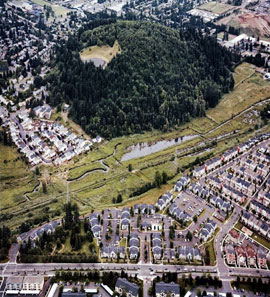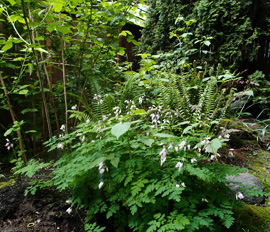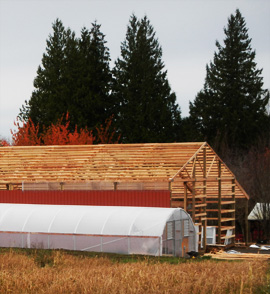MAY 29, 2014
East Multnomah Soil and Water Conservation District (EMSWCD), Metro and the City of Gresham have purchased and permanently protected the Headwaters of Fairview Creek and Grant Butte Wetlands for wildlife habitat and public open space. This significant 33-acre acquisition includes over 1/3 mile of Fairview Creek, a portion of Grant Butte, habitat for about one hundred species of wildlife, and a very essential block of natural open space for the residents of East Portland and the City of Gresham. Metro and Gresham will manage the property.
“We are really excited that we were able to partner with Gresham and Metro to permanently protect this amazing resource for the community,” said Board Chair Laura Masterson. “These types of partnerships are critical to preserving nature in our neighborhoods.” Read more






 “When I was deciding where to put my vegetable garden, I picked the sunniest spot in the yard and started digging. I wanted to get a look at the soil. What I found was great soil for gardening, and some garbage left behind. Because some of the debris was painted, I became concerned about lead in my soil. Since I had planned to test the soil for pH, organic matter, phosphorous, and potassium, I decided to add lead to the list.”
“When I was deciding where to put my vegetable garden, I picked the sunniest spot in the yard and started digging. I wanted to get a look at the soil. What I found was great soil for gardening, and some garbage left behind. Because some of the debris was painted, I became concerned about lead in my soil. Since I had planned to test the soil for pH, organic matter, phosphorous, and potassium, I decided to add lead to the list.”